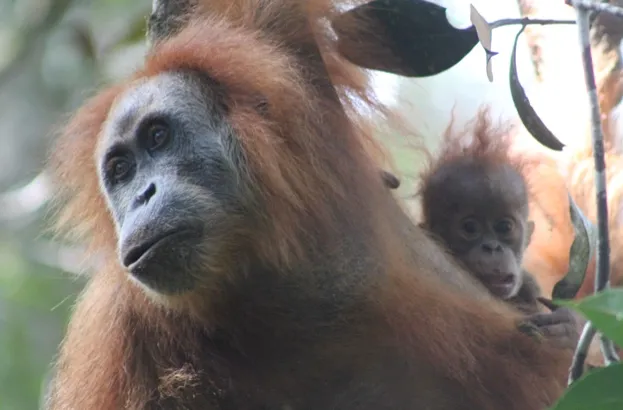The future is orange.
In a stunning discovery that yet again proves there is much we still don’t know about the natural world, primatologists have identified a new species of orangutan. It brings the total to three – the other species are the Bornean and Sumatran orangutans.
The new species has been called the Tapanuli orangutan, after the local name for its rainforest home in northern Sumatra, Harang Tapanuli. Its scientific name is Pongo tapanuliensis.
It’s not all good news, however: there are fewer than 800 Tapanuli orangutans left.
Scientists have known for some time that Tapanuli orangutans differ from those elsewhere on the island of Sumatra, which will retain the name Sumatran orangutan, Pongo abelii. Now research has shown that these differences – genetic, behavioural and morphological – mark them out as a distinct species in their own right.

Like all orangutans, Tapanuli orangutans are magnificent gangly-limbed, flame-coloured, shaggy great apes. But they have frizzier hair.
The adult males also sport a prominent moustache, and their face-pads – called flanges – tend to be less obvious than in either Sumatran or Bornean orangutans.
Other differences include the wispy red beards of female Tapanuli orangutans, which are missing in Bornean orangutans (though female Sumatran orangutans have them). And both sexes of Tapanuli orangutan have less robust skulls and jaws than their orangutan relatives elsewhere.
The new species’ discovery comes at a critical time. Both Sumatran and Bornean orangutans are classed as Critically Endangered by the IUCN. Given their rarity, Tapanuli orangutans are likely to be accorded the same status.
“The Tapanuli orangutan will become the most endangered species of great ape in the world,” said Gabriella Fredriksson of the Sumatran Orangutan Conservation Programme. “There are no others with such a small population.”
However not all scientists agree with the new classification. Professor Jerry Coyne, an evolutionary biologist at the University of Chicago says, "Two populations belong to different species if, when they encounter each other in nature, they do not produce fertile offspring. Since the Tapanuli orangs don’t currently encounter the north Sumatran population, their species status becomes a pure judgment call."
"They did produce fertile hybrids up to 20,000 years ago, after which the populations became geographically separated. A subjective criterion based on arbitrary differences in appearance and genes means almost any isolated population could be called a new species, including populations of humans!"
Meet the family: The 8 great apes
- Human, Homo sapiens
- Chimpanzee, Pan troglodytes
- Bonobo (also known as pygmy chimpanzee), Pan paniscus
- Western gorilla, Gorilla gorilla
- Eastern gorilla (includes two subspecies: mountain gorilla and Grauer’s/eastern lowland gorilla), Gorilla beringei
- Bornean orangutan, Pongo pygmaeus
- Sumatran orangutan, Pongo abelii
- Tapanuli orangutan, Pongo tapanuliensis
Main image: There are now three species of orangutan. © Jonas Landolt